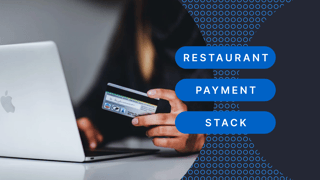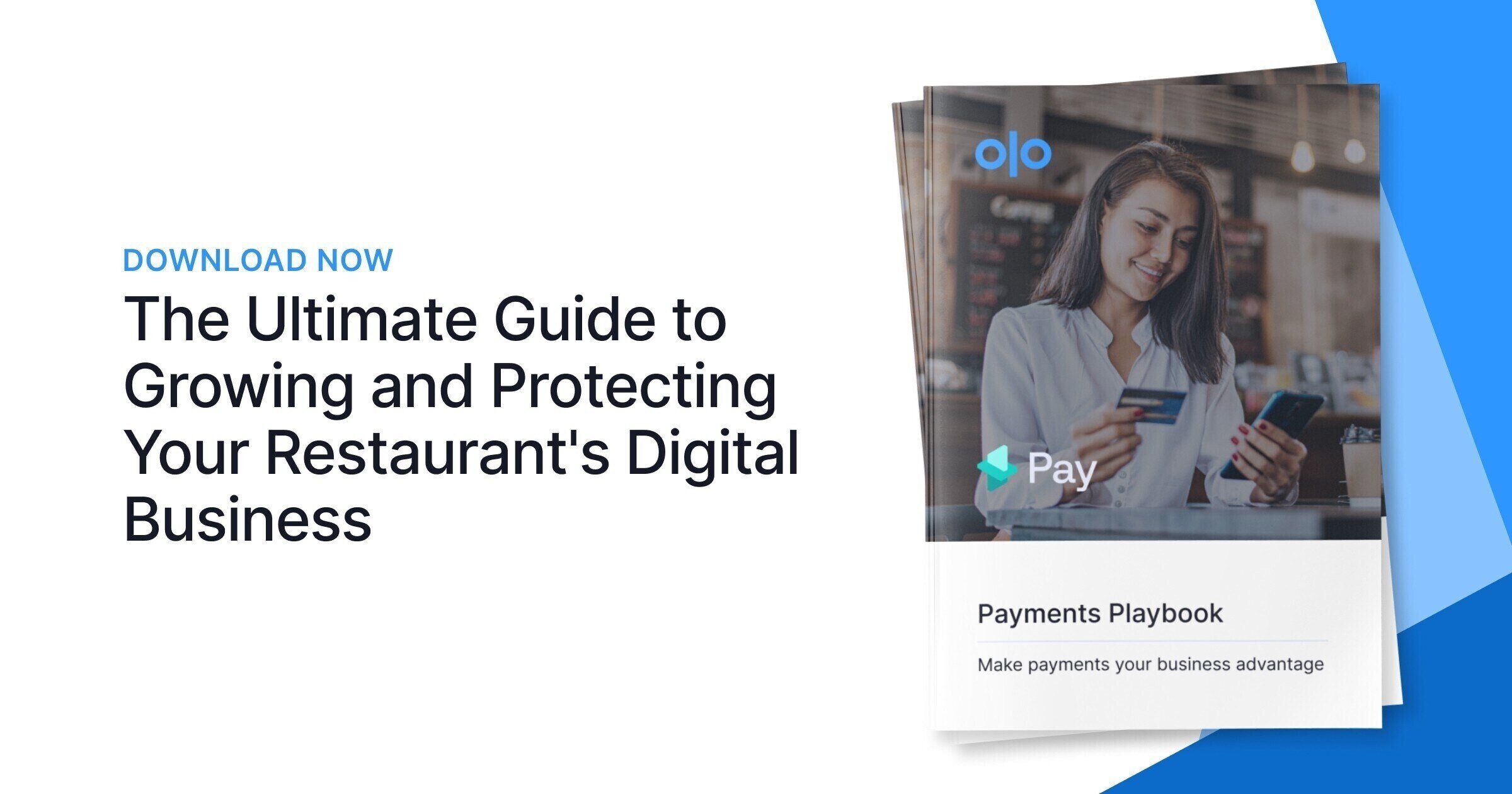
This article outlines:
Why it's important to thoroughly vet payment providers
Things to consider before implementing a new payment stack
What to look for in a restaurant payment platform
In an increasingly contactless world, payment processing for digital transactions has become a priority across industries. But for restaurant brands that have spent years bemoaning antiquated payment systems for their endless fees, security issues, and lack of tech integration, it can be a sore subject.
The truth is: A traditional payment processor simply doesn’t cut it anymore. Restaurant brands must have a comprehensive payment platform to streamline their tech stack, drive direct sales, and unify siloed data.
But implementing any new system is no small undertaking. Budgets are tight, labor is strained, and yet, innovation is key to remaining competitive.
So when is the optimal time to upgrade?
Start by asking yourself the following questions.
10 Things To Consider Before Implementing a New Payment Stack
- What are your current authorization rates? Have they been increasing or decreasing?
- What are your cart abandonment rates? Are they trending up or down?
- Which fees on your payment service provider’s statement can you not confidently explain?
- How do your payment acceptance costs vary from quarter to quarter?
- What are your current rates of fraud and chargebacks? Have they changed over time?
- What are your costs of chargebacks, won and lost?
- What are your administrative costs for handling chargebacks?
- What kind of payment tokens do you use and what is the cost?
- What are the costs of maintaining your payments platform as it relates to keeping up with new network rules and requirements? (PCI compliance, reporting, interchange changes, etc.)
- How is card life cycle management handled?
If your restaurant brand is consistently embattled by fees, struggling to manage chargebacks and PCI compliance, and/or experiencing high cart abandonment rates, it’s time to update your payment system.

What To Look For in a Restaurant Payment Platform
A modern restaurant payment platform will not only simplify operations but also enhance the guest experience. It shouldn’t just solve existing problems, either; it should be future-proof to ensure that as you build out the rest of your restaurant tech stack, it will continue to meet your needs.
To set up your brand for success, make sure your payment system checks all of these boxes.
Transparent Fee Structure
The cost of accepting payments goes beyond the processing fee and often includes other charges. Traditional payment processors will sometimes hide fees, overcharge for services, or charge for unnecessary items.
Hidden fees are often considered markup costs and can be charged on a transaction basis or monthly. They can include PCI fees, software fees, gateway fees, CPU fees, AVS fees, equipment costs, and more.
All of these fees are negotiable and should be reviewed prior to implementing a payment system.
Multiple Payment Options
To effectively drive sales, restaurant brands need to optimize for conversion. That includes offering a seamless checkout process with multiple payment options for guest convenience.
Look for a payment platform that enables guests to pay with their digital wallet (Apple Pay, Google Pay) and save a card on file for faster checkout on subsequent visits. The fewer barriers—manual credit card entry, password management, etc.—the better.
Advanced Fraud Protection
As the number of digital transactions continues to skyrocket, restaurant brands need to be vigilant when it comes to fraud. Each restaurant transaction could be made by a real guest or a scammer.
While many restaurant brands are forced to purchase fraud protection from a company outside of their payment processor, a comprehensive payment platform will include it within their offerings and the upfront cost.
A modern payment stack can tell the difference between scammers and actual guests by leveraging machine learning to catch fraud and accept legitimate transactions. While some chargebacks are unavoidable, the right technology will limit fraud to a bare minimum.
Full Integration
In order to truly know your guests, you need a restaurant tech stack built with systems that talk to each other. That way, you can collect, analyze, and act on unified data. If your payment processor, online ordering solution, CRM, POS, etc. do not share data, you’re not getting the full picture of the guest's journey.
By eliminating data silos, you can gain a comprehensive understanding of each guest, including their purchasing behavior, preferences, and long-term value to the business. So, before selecting a payment platform, ensure that it fully integrates with your existing tech stack.
Seamless Onboarding
One of the biggest challenges of implementing a payment platform is the amount of time and resources it takes for a successful roll-out brand-wide. Between staffing challenges and razor-thin margins, quick and painless onboarding is key to successfully standing up any new restaurant system.
When vetting payment solutions, find out what the onboarding process entails and approximately how long it will take—depending on the vendor, it could take days or weeks to set up a new merchant account—so you can anticipate the impact on operations and prepare.

Final Thoughts
While no single payment platform works for all restaurants, the right system will lay the groundwork for sustainable business growth while improving day-to-day operations for staff and the overall guest experience.
For example, since switching from a legacy processor to Olo Pay, our restaurant-specific payment platform, WaBa Grill has seen a significant reduction in fraud and fees, as well as an improved authorization rate that has resulted in additional revenue. Read the case study for details.
Before implementing a new system, it’s good to know what’s working and what isn’t with your current setup—and the direction you want to move in. Once you have a baseline established, you can better evaluate each vendor’s differentiators and how they can meet your brand’s needs today and in the future.
Learn about our comprehensive restaurant payment platform, and contact us to find out how Olo Pay can transform your business.
Photo Credit: Pickawood from Unsplash

